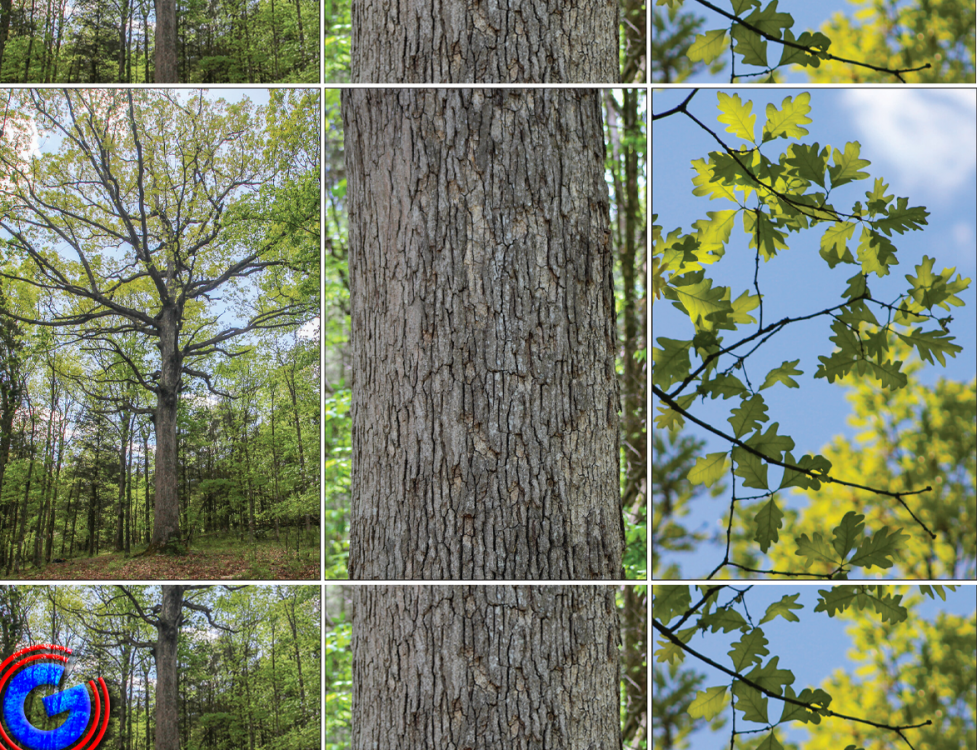A group of scientists has been quietly working for decades on a project to improve tree genetics, with white oaks among the target species for the UT Tree Improvement Program. For those who are curious, genetics in organisms refers to the study of genes and how they are passed down from generation to generation. Genetics in trees, however, focuses on the study of genes within tree species and examines how their genetic makeup influences traits such as growth rate, wood quality, and resilience to environmental stresses.
Scott Schlarbaum, a distinguished professor of forestry at UTIA, leads the UT Tree Improvement Program and is among the co-authors of the paper that describes the white oak genome and how local adaptations may have implications for the species in relation to heat and drought stress. Photo by A. Mains, courtesy UTIA.
Highly valued economically, ecologically, and culturally, the white oak (Quercus alba) is a keystone forest species and one of the most abundant trees across much of eastern North America. However, it faces declining seedling recruitment in many parts of its range.
In a paper published in New Phytologist, researchers representing the University of Tennessee Institute of Agriculture, Indiana University, the University of Kentucky, the U.S. Forest Service, and several other institutions describe for the first time the species’ complex genome, providing insights into fundamental questions about plant evolution, tree breeding, and genetic improvement efforts that could help forest managers plan for and address future forest resources.
Lead authors of the paper, Meg Staton, an associate professor of bioinformatics and computational genomics in the UT Department of Entomology and Plant Pathology, and Drew Larson, a National Science Foundation postdoctoral fellow at Indiana University, coordinated with colleagues across academia, the U.S. Forest Service, state forests, and industry to obtain genetic sequence data representative of the species.
Also central to the effort were Seth DeBolt, a professor of horticulture and director of the James B. Beam Institute for Kentucky Spirits at the University of Kentucky, and Dana Nelson of the U.S. Forest Service Southern Research Station and director of the Forest Health Research and Education Center at the University of Kentucky.
Staton and her co-authors state in the paper, “The white oak genome represents a major new resource for studying genome diversity and evolution in Quercus. Additionally, unbiased gene annotation is key to accurately assessing R [disease resistance] gene evolution in Quercus.”
The paper addresses the extent of genetic diversity and population differentiation in Quercus alba, as well as how gene content and disease resistance genes appear to have evolved during the history of Quercus and related taxa. The authors also discuss phylogenetic hypotheses—how oak species are evolutionarily related—as supported by whole genome data.
The study notes that the amount of standing genetic variation and the extent to which populations are locally adapted will have implications for the response of Quercus alba and other white oak species to increasingly prevalent heat and drought stress. The details of this study are of interest to those invested in the sustainability of white oak across economic, ecological, and cultural boundaries.
Part of the project was sponsored by Maker's Mark Distillery and Independent Stave Company. The white oak tree whose genome was sequenced for the study is from the Maker's Mark campus in Loretto, Kentucky.
The University of Tennessee Institute of Agriculture comprises the Herbert College of Agriculture, the UT College of Veterinary Medicine, UT AgResearch, and UT Extension. Through its land-grant mission of teaching, research, and outreach, the Institute touches lives and provides Real. Life. Solutions. to Tennesseans and beyond. utia.tennessee.edu.





